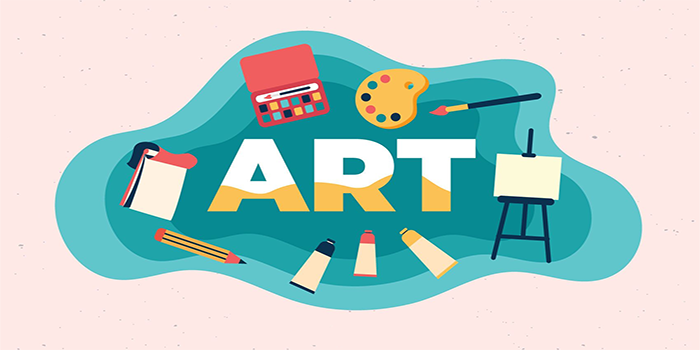
The most common subject in art is the human figure. This subject has been accurately and expressively depicted since the earliest days of art. Other popular subjects in art include landscapes, still life, animals, abstractions, and portraits. Each of these subjects has been explored in various mediums such as painting, sculpture, photography, and printmaking.
Importance of Art Subject
Art is an important subject in school because it teaches students to be creative and express themselves in new and innovative ways. Art encourages students to think outside the box and explore their creative sides. It also teaches them to appreciate the beauty of art and the creative process. Additionally, art helps students develop problem–solving skills and the ability to think critically. By learning about art, students can gain insight into different cultures, traditions, and perspectives. Finally, art can be a great source of stress relief and can help students relax and take a break from their academic studies.
Purpose of Art Subject
The purpose of art subject is to foster creative thinking and visual expression. Art classes provide opportunities for students to explore different mediums such as painting, sculpture, drawing, photography, and digital art. Through art, students can develop their aesthetic awareness, learn how to communicate ideas, and refine their technical skills. Art also provides an outlet for self–expression and encourages critical thinking, problem–solving, and collaboration.
How to Find Tutions and Teachers for Art Subject
1. Search online: There are many websites that provide a list of tutors and teachers for art subjects. Sites such as Tutor Finder, Tutor.com, and Wyzant are good places to start.
2. Ask around: Ask friends, family, and colleagues who may have hired or worked with a tutor or teacher for art. They may be able to provide you with recommendations.
3. Check with local schools: Contact art schools and universities in your area to see if they have any tutoring or teaching programs. They may be able to provide you with a list of qualified tutors and teachers.
4. Take advantage of social media: Use social media to your advantage and post a query on platforms such as Facebook, Twitter, and LinkedIn. You may be surprised by the number of people who respond.
5. Utilize online forums and bulletin boards: Look for online forums and bulletin boards specifically related to art and education. You may be able to find a tutor or teacher in your area who can help you out.
6. Check with local art organizations: Contact local art organizations such as art galleries, museums, and community centers. They may be able to provide you with advice and contacts for tutors and teachers in your area.
Points that cover in Art Subject
1. History of Art – A look at the development of art throughout history, from prehistoric art to contemporary art.
2. Studio Art – This covers a variety of mediums, including painting, sculpture, printmaking, digital art and more.
3. Art Appreciation – An exploration of the principles and elements of art, and an appreciation for art from different cultures.
4. Drawing – A focus on various drawing techniques, including line, shading, perspective, and more.
5. Painting – A study of different painting styles and techniques, such as watercolor, acrylic, and oil painting.
6. Sculpture – A look at how to create three–dimensional artworks from clay, stone, wood, and other materials.
7. Art Criticism – A study of how to analyze, interpret, and critique artwork.
8. Art Theory – An exploration of the philosophical, psychological, and social aspects of art.
9. Color Theory – A discussion of the properties of color, including hue, saturation, value, and more.
10. Art Conservation – A look at the techniques used to preserve and protect works of art.






